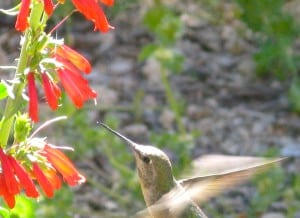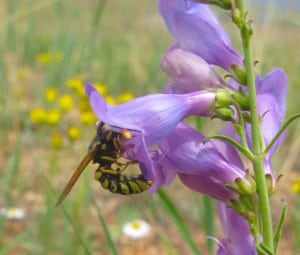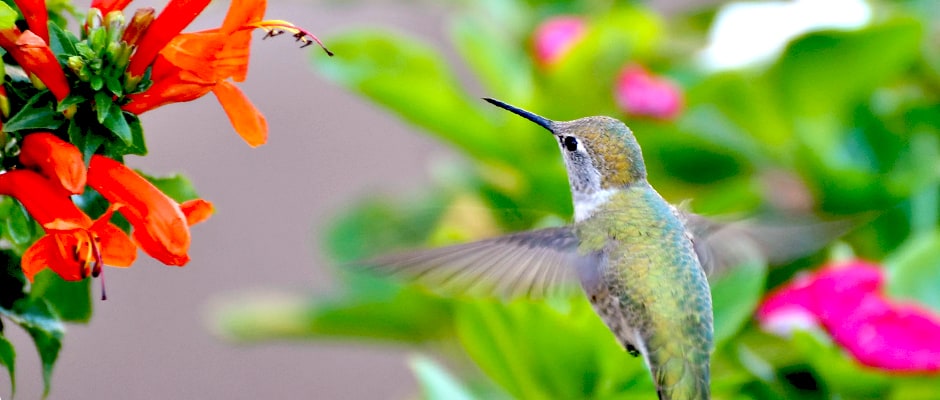Share this article
A colorful shift that attracts hummingbirds to bees’ flowers
Some wildflowers might be changing their color to attract hummingbirds instead of bees, according to a recent study.
As part of the study published in the American Journal of Botany, researchers used a phylogenetic tree, which shows relationships among species, to detect shifts in pollination of plants in the Penstemon genus from bees to hummingbirds. This genus includes colorful wildflowers and is the largest group of plants native to North America. “By disentangling the evolutionary relationships among species, we can get an idea of how many times natural selection has favored a strategy using hummingbirds as pollinators,” said Carolyn Wessinger, a postdoctoral fellow at the University of Kansas and lead author of the study.

The Penstemon eatonii plant, a wildflower in the Penstemon family, shows the typical hummingbird-adapted floral form. ©Carolyn Wessinger
The researchers studied 77 of the nearly 300 species in the Penstemon group, in which more plants are typically pollinated by bees rather than hummingbirds. The difference mostly lies in color and shape: While plants pollinated by hummingbirds have bright red flowers, lots of nectar and are a narrow tube shape, plants pollinated by bees are blue or purple with wider flowers.
But on close examination, the researchers found some of the species of flowers such as the Penstemon eatonii plant had evolved to be better suited to hummingbird pollination. Wessinger speculates that this means isolated populations of plants that are adapted to bee pollination might find that bees are no longer reliable pollinators. “But hummingbirds are around,” she said. “So natural selection might slowly favor floral traits, and there will be increased evolutionary attractiveness to hummingbirds.”
Further, from the phylogenetic tree, the team suspects that once modifications are made to the flowers that attract hummingbirds, it’s more difficult for the plants to make changes allowing bees to pollinate them again. For example, the narrow flowers on the plants that allow pollen to get specifically and precisely deposited on hummingbirds also exclude bees from visiting them.

Penstemon virgatus is adapted to pollination by bees and wasps. ©Carolyn Wessinger
Wessinger plans to continue studying the relationship between hummingbirds, bees and pollination. For future work, she plans to expand the phylogenetic tree. “By including more species, we can get a better idea of the patterns of pollination in this group of plants,” she said. She also plans to investigate the genetic changes that allow the floral form changes to occur.
But Wessinger says it doesn’t seem as if this shift in pollination to hummingbirds is putting bees in danger at this point. But the research does bring up some interesting questions to study further. For instance, “Why do some lineages within this group make this transition and others haven’t?” Wessinger asks, and “What conditions might promote this shift?”
Header Image: ©marksontok








